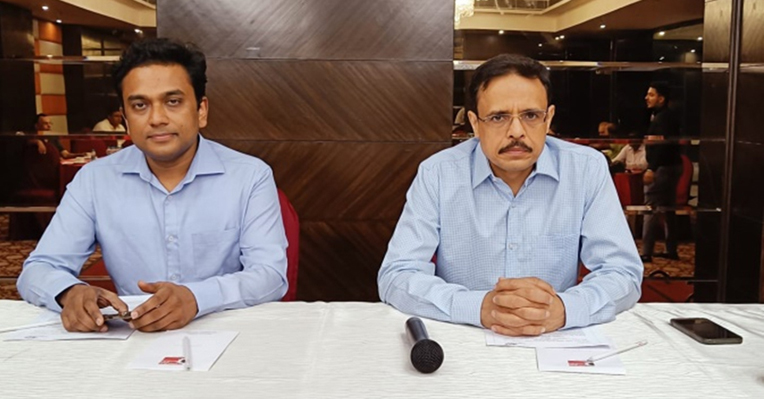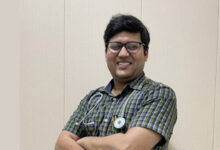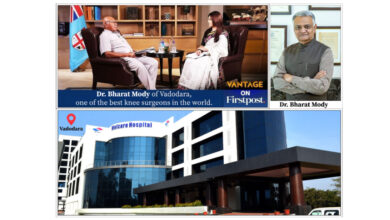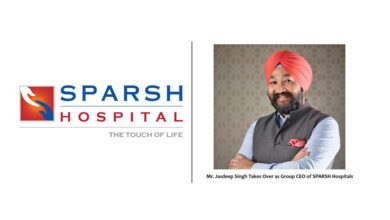Stroke unit at Artemis Hospital develops peripheral network in Haryana to curb stroke related mortality

Gurugram (Haryana) [India], 21st July 2022: Despite the advent of modern methods of treating stroke, there has been a significant rise in the mortality and morbidity ratio due to stroke in the recent times due to the non-availability of an advanced stroke centre on time. Pertaining to the same, Artemis-Agrim Institute of Neurosciences, today, launched a new ‘Drip and Ship’ Approach, that aims to provide initial emergency treatment at the peripheral network hospital, before management at an advanced stroke management centre.
Since there are a very few hospitals who have a dedicated team of neuro-interventionists who can perform mechanical thrombectomy procedures, as soon as the patient arrives to the hospital, Artemis Agrim Institute of Neurosciences has developed a network of peripheral stroke centres-known as Drip & Ship’ approach, in and around Haryana, which manage stroke patients in close coordination with each other. However, this requires close coordination and cooperation between the peripheral and central stroke teams.
In the peripheral hospital the clot dissolving injection is given (called as – DRIP) and then the patient is shifted to the stroke centre (called as -SHIP) to perform the mechanical thrombectomy procedure which is very effective in occlusion of large blood vessels. Using this approach, the patient receives the intravenous drug without the delay of transferring to another hospital. And they are able to receive the advanced mechanical thrombectomy treatment in the centres which focused on advanced stroke management. However, to be effective one has to do treat in first few golden hours after stroke.
Dr Vipul Gupta, Chief of Neurointervention and Co-director of Stroke Unit at Artemis-Agrim Institute of Neurosciences, showcased (elaborated) how the Drip & Ship approach helped in saving the life of a 67-year-old lady from Faridabad, who had a sudden onset of weakness on left side of the body and was successfully saved at Artemis Agrim Institute of Neurosciences, Gurugram.
“The patient was taken to a local hospital in Faridabad, where MRI of the brain revealed a small area of stroke in the right side of the brain. Brain angiography study revealed complete occlusion of the right sided artery of the brain. Doctors from the local hospital had a detailed discussion with our stroke team and the patient was immediately given clot dissolving drug tPA in Faridabad. Though clot dissolving drugs are highly effective for small occlusions, but in this case with large occlusion, the effectiveness was very low and required immediate intervention. Patient was immediately shifted to Artemis hospital in coordination with the stroke team of Artemis-Agrim institute of neurosciences for further procedure. “The neurointervention team was ready for the procedure and the patient was taken from the ambulance straightaway to the NeurointerventionalCath lab where the procedure was performed.” Said Dr Vipul Gupta.
Angiogram confirmed the persistent blockage of the right sided cerebral artery. Doctors decided to do a procedure known as “mechanical thrombectomy”, a procedure where, through the leg blood vessel a thin tube was taken into the brain into the area of the clot which was and a device known as stent retriever was deployed in the clot and it was taken out of the body, restoring the oxygen supply to the brain. This procedure helps in reviving the brain tissue which was not yet dead but wasn’t functioning because of lack of blood flow. Since most of the brain tissue was saved from the damage, the patient made a remarkable recovery and from the very next day her movements of left side of body had come back. In a week the patient could go back to her work and could manage patients. She went back to her complete previous lifestyle.
“When it comes to stroke, every minute matters. During each minute 2 million cells die. In a way, during stroke, the patient keeps losing a part of oneself with each passing minute. Nowadays we have modern methods of treating stroke in which very early treatment can stop the stroke in its tracks and can even reverse it. However, to be effective one has to do treat in first few golden hours after stroke. Neuro-interventional procedure of mechanical thrombectomy has become the main treatment for acute stroke. Large blood vessels which are blocked by a clot can be opened by this procedure which can help many patients can make miraculous recovery.” Added Dr Gupta.
In such emergency cases, making use of the “drip and ship approach”, the Stroke team at Artemis Agrim institute of Neurosciences will be already aware about the patient’s condition and other medical details (who is being shifted from a peripheral hospital) and thus further management of reopening the vessels can be done in the shortest possible time.
“The ”Drip and Ship” method is particularly important in a country like ours in which advanced facilities are not readily available but coordination between peripheral and major hospitals can still help in giving best possible treatment to these patients. In the Stroke Unit a team of doctors including neurointervention team is available round the clock. For fast treatment, teams of emergency physicians, stroke physicians, neurointervention and neurocritical care team co-ordinate to perform emergency treatment within the first few golden hours of stroke.” Added Dr Gupta.














